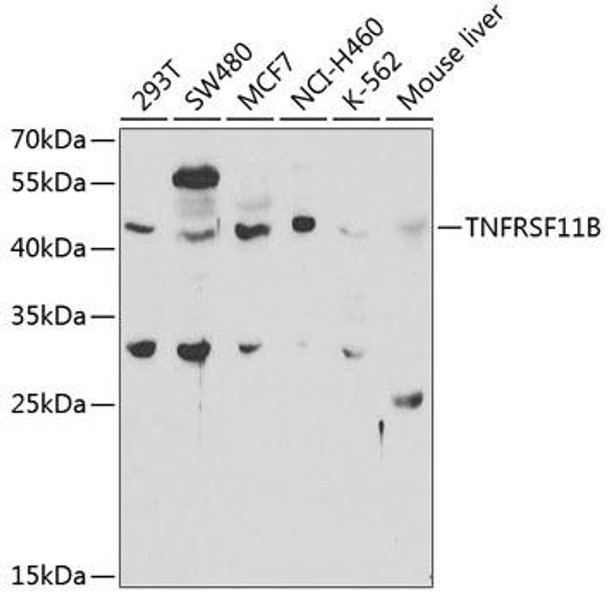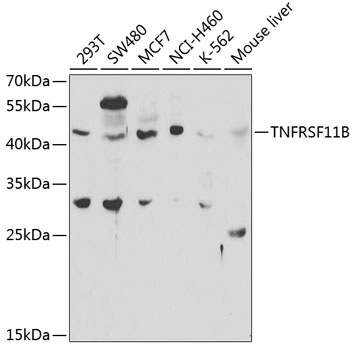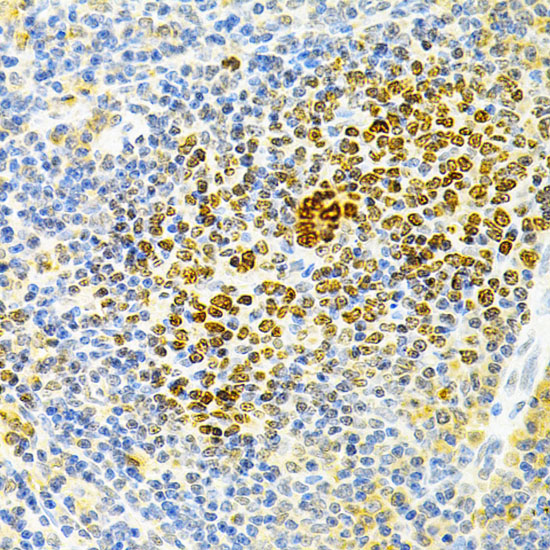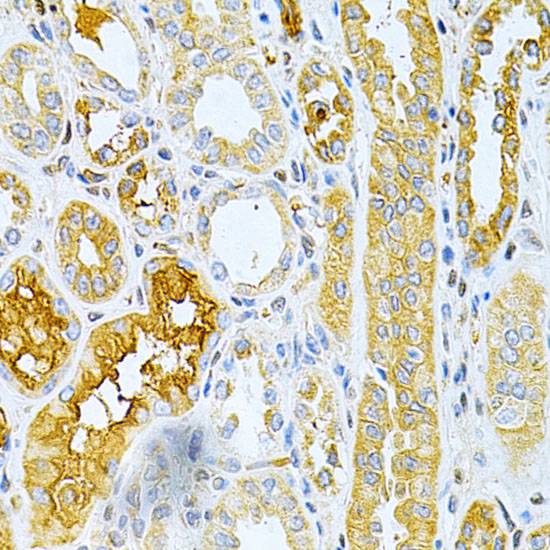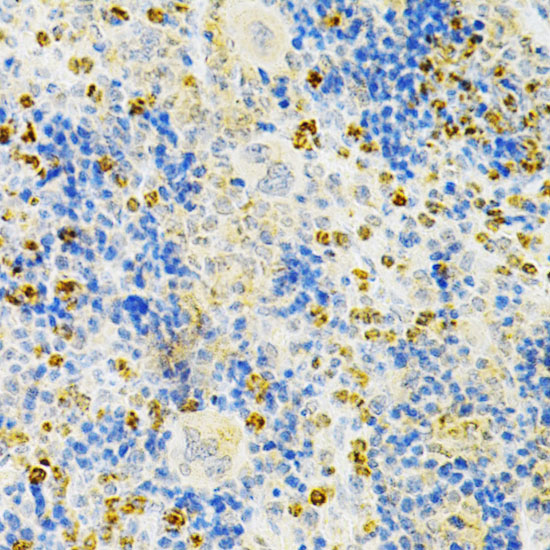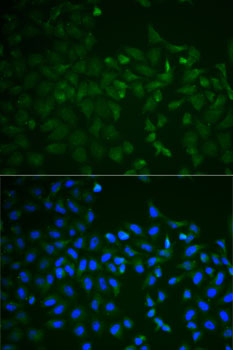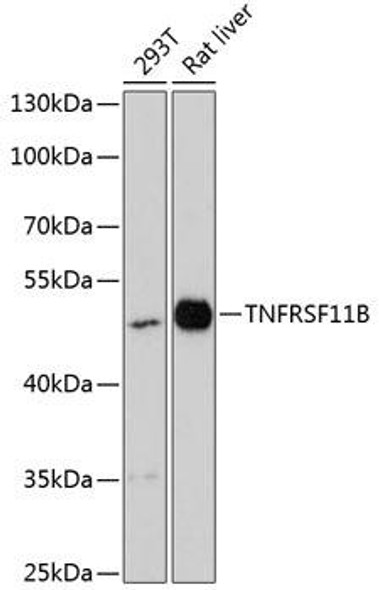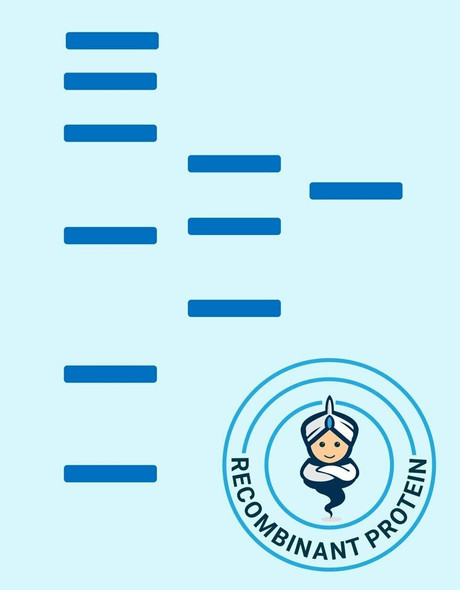Anti-TNFRSF11B Antibody (CAB2100)
- SKU:
- CAB2100
- Product type:
- Antibody
- Reactivity:
- Human
- Mouse
- Rat
- Host Species:
- Rabbit
- Isotype:
- IgG
- Research Area:
- Cell Death
Frequently bought together:
Description
| Antibody Name: | Anti-TNFRSF11B Antibody |
| Antibody SKU: | CAB2100 |
| Antibody Size: | 20uL, 50uL, 100uL |
| Application: | WB IHC IF |
| Reactivity: | Human, Mouse, Rat |
| Host Species: | Rabbit |
| Immunogen: | Recombinant fusion protein containing a sequence corresponding to amino acids 22-280 of human TNFRSF11B (NP_002537.3). |
| Application: | WB IHC IF |
| Recommended Dilution: | WB 1:500 - 1:2000 IHC 1:50 - 1:200 IF 1:10 - 1:100 |
| Reactivity: | Human, Mouse, Rat |
| Positive Samples: | 293T, SW480, MCF7, NCI-H460, K-562, Mouse liver |
| Immunogen: | Recombinant fusion protein containing a sequence corresponding to amino acids 22-280 of human TNFRSF11B (NP_002537.3). |
| Purification Method: | Affinity purification |
| Storage Buffer: | Store at -20°C. Avoid freeze / thaw cycles. Buffer: PBS with 0.02% sodium azide, 50% glycerol, pH7.3. |
| Isotype: | IgG |
| Sequence: | ETFP PKYL HYDE ETSH QLLC DKCP PGTY LKQH CTAK WKTV CAPC PDHY YTDS WHTS DECL YCSP VCKE LQYV KQEC NRTH NRVC ECKE GRYL EIEF CLKH RSCP PGFG VVQA GTPE RNTV CKRC PDGF FSNE TSSK APCR KHTN CSVF GLLL TQKG NATH DNIC SGNS ESTQ KCGI DVTL CEEA FFRF AVPT KFTP NWLS VLVD NLPG TKVN AESV ERIK RQHS SQEQ TFQL LKLW KHQN KDQD IVKK IIQD IDLC ENS |
| Gene ID: | 4982 |
| Uniprot: | O00300 |
| Cellular Location: | Secreted |
| Calculated MW: | 46kDa |
| Observed MW: | 44kDa |
| Synonyms: | TNFRSF11B, OCIF, OPG, PDB5, TR1 |
| Background: | The protein encoded by this gene is a member of the TNF-receptor superfamily. This protein is an osteoblast-secreted decoy receptor that functions as a negative regulator of bone resorption. This protein specifically binds to its ligand, osteoprotegerin ligand, both of which are key extracellular regulators of osteoclast development. Studies of the mouse counterpart also suggest that this protein and its ligand play a role in lymph-node organogenesis and vascular calcification. Alternatively spliced transcript variants of this gene have been reported, but their full length nature has not been determined. |
| UniProt Protein Function: | TNFRSF11B: Acts as decoy receptor for RANKL and thereby neutralizes its function in osteoclastogenesis. Inhibits the activation of osteoclasts and promotes osteoclast apoptosis in vitro. Bone homeostasis seems to depend on the local RANKL/OPG ratio. May also play a role in preventing arterial calcification. May act as decoy receptor for TRAIL and protect against apoptosis. TRAIL binding blocks the inhibition of osteoclastogenesis. Defects in TNFRSF11B are the cause of juvenile Paget disease (JPD); also known as hyperostosis corticalis deformans juvenilis or hereditary hyperphosphatasia or chronic congenital idiopathic hyperphosphatasia. JPD is a rare autosomal recessive osteopathy that presents in infancy or early childhood. The disorder is characterized by rapidly remodeling woven bone, osteopenia, debilitating fractures, and deformities due to a markedly accelerated rate of bone remodeling throughout the skeleton. Approximately 40 cases of JPD have been reported worldwide. Unless it is treated with drugs that block osteoclast- mediated skeletal resorption, the disease can be fatal. |
| UniProt Protein Details: | Protein type:Secreted; Secreted, signal peptide; Inhibitor Chromosomal Location of Human Ortholog: 8q24 Cellular Component: proteinaceous extracellular matrix; extracellular space; extracellular region Molecular Function:cytokine activity; receptor activity Biological Process: response to drug; extracellular matrix organization and biogenesis; response to magnesium ion; negative regulation of odontogenesis of dentine-containing teeth; response to estrogen stimulus; apoptosis; response to arsenic; negative regulation of bone resorption; signal transduction; skeletal development; response to nutrient Disease: Paget Disease, Juvenile |
| NCBI Summary: | The protein encoded by this gene is a member of the TNF-receptor superfamily. This protein is an osteoblast-secreted decoy receptor that functions as a negative regulator of bone resorption. This protein specifically binds to its ligand, osteoprotegerin ligand, both of which are key extracellular regulators of osteoclast development. Studies of the mouse counterpart also suggest that this protein and its ligand play a role in lymph-node organogenesis and vascular calcification. Alternatively spliced transcript variants of this gene have been reported, but their full length nature has not been determined. [provided by RefSeq, Jul 2008] |
| UniProt Code: | O00300 |
| NCBI GenInfo Identifier: | 322510101 |
| NCBI Gene ID: | 4982 |
| NCBI Accession: | O00300.3 |
| UniProt Secondary Accession: | O00300,O60236, Q53FX6, Q9UHP4, B2R9A8, |
| UniProt Related Accession: | O00300 |
| Molecular Weight: | 46,026 Da |
| NCBI Full Name: | Tumor necrosis factor receptor superfamily member 11B |
| NCBI Synonym Full Names: | tumor necrosis factor receptor superfamily, member 11b |
| NCBI Official Symbol: | TNFRSF11B |
| NCBI Official Synonym Symbols: | OPG; TR1; OCIF |
| NCBI Protein Information: | tumor necrosis factor receptor superfamily member 11B; osteoprotegerin; osteoclastogenesis inhibitory factor |
| UniProt Protein Name: | Tumor necrosis factor receptor superfamily member 11B |
| UniProt Synonym Protein Names: | Osteoclastogenesis inhibitory factor; Osteoprotegerin |
| UniProt Gene Name: | TNFRSF11B |
| UniProt Entry Name: | TR11B_HUMAN |

